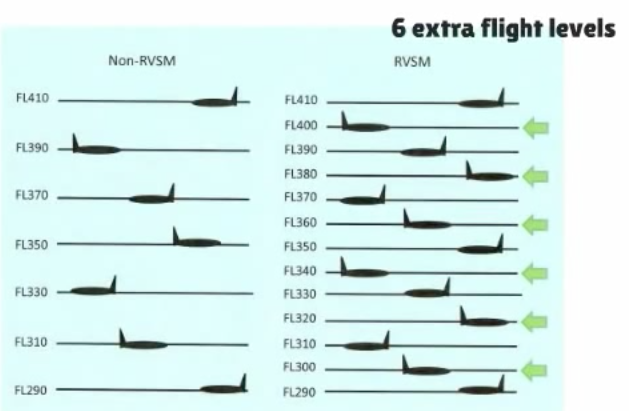Navigation » Rvsm (reduced vertical separat
Reduced Vertical Separation Minima (RVSM)
RVSM is the vertical separation of two aircraft flying between the altitudes of 29,000ft (29L) and 41,000ft (41L). The vertical separation is now reduced to minimum 1000ft from its previous 2000ft in certain airspace.
It allows aircraft to operate at closer to optimum flight levels thus save fuel and increase airspace capacity.
For an aircraft to qualify to operate in RVSM airspace, it has to be equipped with
- Two independent altitude measurement systems;
- An altitude alerting system;
- An automatic altitude control system; and
- Secondary surveillance radar with altitude reporting system.

Contingency procedures when unable to maintain RVSM
▪ The pilots shall notify ATC of any equipment failure, weather hazards which may affect the ability to maintain the cleared level or the RVSM requirements.
▪ Where a meteorological forecast is predicting severe turbulence within the RVSM Airspace, ATC shall determine whether RVSM should be suspended, and, if so, the period of time, and specific flight level(s) and/or area.
▪ When notified by ATC of an assigned altitude deviation of more than 300ft (90 m),▪ In the event of a pilot advising that the aircraft is no longer capable of RVSM operations, it is particularly important that the first ATS unit made aware of the failure performs the necessary co-ordination with subsequent ATS units.
▪ In the event of a pilot advising that the aircraft is no longer capable of RVSM operations, it is particularly important that the first ATS unit made aware of the failure performs the necessary co-ordination with subsequent ATS units.

